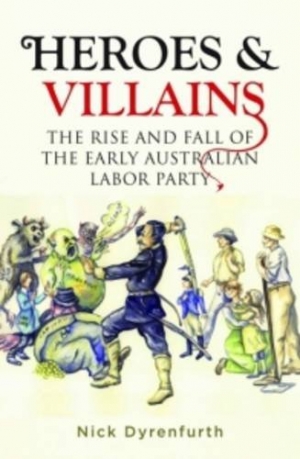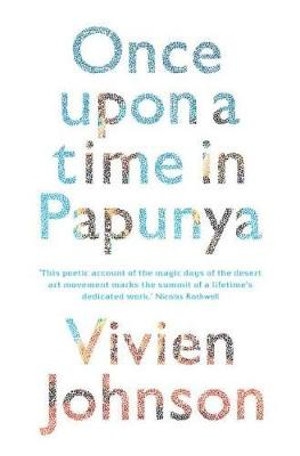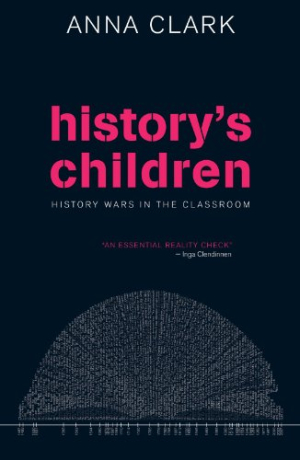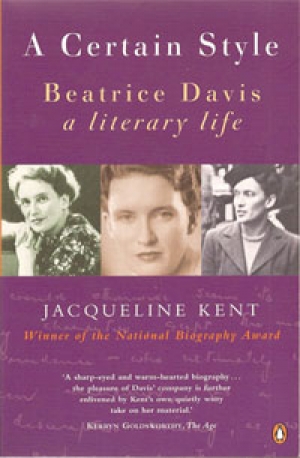NewSouth
This year is the 175th anniversary of European settlement in South Australia. The University of Adelaide presented a series of public lectures collectively called Turning Points in South Australian History. Bill Gammage gave the first and showed by an accretion of primary sources that, prior to white settlement in 1836, Aborigines kept a tidy landscape thanks to the controlled use of fire. First Adelaidians exclaimed that the landscape was close to an English garden. Henry Reynolds gave the second lecture, and made much of the political and social timing of the settlement, after the abolition of slavery in London and just before the Treaty of Waitangi in New Zealand. The idea of terra nullius was in its preliminary colonial tatters.
... (read more)Stuart Macintyre reviews 'Heroes & Villains: The Rise and Fall of the Early Australian Labor Party' by Nick Dyrenfurth and 'A Little History of the Australian Labor Party' by Nick Dyrenfurth and Frank Bongiorno
The heroes and villains in Nick Dyrenfurth’s account of the early Labor Party are the cartoon figures in the labour press that he uses to explore its political rhetoric. The heroes are sturdy working men, sometimes in bush garb, sometimes industrial labourers. The villains take various forms: serpents, harpies, bloodsucking insects, menacing aliens, but above all the Fat Man, the swollen, grotesque embodiment of capitalist greed. Dyrenfurth observes that Mr Fat is a far more ubiquitous device in Australian radical iconography than its counterparts elsewhere. British cartoons used a variety of villains: aristocratic loafers, rapacious landlords, ruthless sweaters, mendacious press barons. Those in the United States were less likely to personify capitalism with a generic capitalist villain than to depict combines and trusts.
... (read more)Hugh White reviews 'There Goes the Neighbourhood: Australia and the Rise of Asia' by Michael Wesley
Sometime around 1820, forty years after its Industrial Revolution began, Britain overtook China to become the world’s richest country. Sometime between now and 2020, forty years after China’s own Industrial Revolution was launched by Deng Xiaoping’s economic reforms, China is set to overtake the United States and regain its place at the top of the world’s economy.
... (read more)John Rickard reviews 'Savage or Civilised? Manners in Colonial Australia' by Penny Russell
Lacking a titled aristocracy and the leisured class that went with it, Australian colonial society encouraged an egalitarianism of manners. This, however, did not reflect the absence of social stratification: rather, as it has been argued, it was a means of being reconciled to it in a new setting ...
... (read more)Ian McLean reviews 'Once Upon a Time in Papunya' by Vivien Johnson
The most widely known story of Australian art is about the beginnings of Papunya Tula. It has, says Vivien Johnson, been ‘retold so often that it almost has the force of Dreaming’. Its force is not just due to the story’s frequent telling, but also to the crime with which it begins, which was the making of prohibited images.
... (read more)Moral panics, which Stanley Cohen, in Folk Devils and Moral Panics (1972), said involve any group of people who are defined as a threat to societal values and interests, were grist to John Howard’s mill during refugee debates. Applying the classic analysis, his governments were ‘moral entrepreneurs’ who employed scare tactics whenever a perceived threat arose. Asylum seekers and their supporters were ‘folk devils’, outsiders and deviants responsible for the problems placing our values and principles in jeopardy.
... (read more)John Hirst review 'History’s Children: History Wars in the Classroom' by Anna Clark
This is an honest, modest report of what students and teachers across the country think about the teaching of Australian history in schools. Anna Clark has allowed her subjects to speak for themselves; being a scrupulous historian, she has not edited their offerings. So we hear words like these: ‘Now they’re having like record numbers [at Anzac Day], and like huge ceremonies all over Australia and they’re like young people that respect it’; and ‘Reading a textbook, when you have to like read three pages of a textbook, and then the teacher’s like, “Do the questions”...’ An enduring value of this book will be its record of teenagers’ spoken English in the first decade of the twenty-first century. It makes for rather tiresome reading, but it is salutary to be constantly reminded of where students are at, like.
... (read more)Andy Quan reviews 'What Happened To Gay Life?' by Robert Reynolds
I recently watched a DVD of The Big Chill (1983). The film’s melancholy over the lost radicalism of the 1960s pervades What Happened to Gay Life?, Robert Reynolds’s new book. One might guess that a book about gay – once synonymous with happy – life might feature a bit of glitter and laughter, but this is not the book’s point.
... (read more)Adrian Caesar reviews 'Slicing The Silence: Voyaging to Antarctica' by Tom Griffiths
Last year I was invited to a literary festival celebrating writing about Antarctica. At the opening drinks session, I fell into conversation with a woman who, when she learned I was a participant, asked me if I had been ‘down south’. I said I hadn’t. She replied somewhat ungraciously, I thought, that she felt few would take me seriously in this forum because I hadn’t made the trip. I was taken aback, but still managed to mutter something in reply about Antarctica’s fascination as an imaginative space.
... (read more)Peter Rose reviews 'A Certain Style: Beatrice Davis: A Literary Life' by Jacqueline Kent
In September 2018, NewSouth published a new edition of A Certain Style.
On a chilly evening in 1980, a stylish woman in her early seventies, wheezing slightly from a lifetime’s cigarettes, climbed a staircase just beneath the Harbour Bridge, entered a room full of book editors – young women mostly, university-educated, making their way ...









